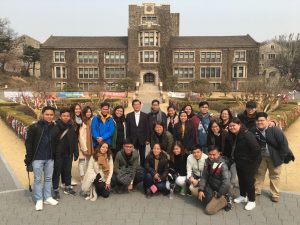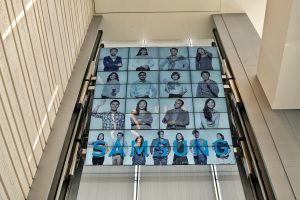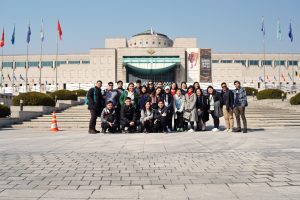The desire to learn more about how management theories actually play out in the real world has propelled us fifth-year students of the Master of Science in Management (MScM) program to go past the constrictions of the classroom walls and mark March 7-13, 2018 as one of the most eventful moments in our whole university life. Twenty of us in class pushed through our study tour in Korea after four months of careful planning and coordination with four faculty members of the School of Management (SMN) to ensure that the whole trip would remain purpose-driven, educational, and cultural amidst all the excitement and fun.
As soon as we stepped out unto the Land of the Morning Calm, we were greeted with the cold winter air, a pleasant indication of the start of a once-in-a-lifetime adventure. We traversed our way through the complex but efficient subway system that took us wherever we needed to go in a matter of minutes. The transportation system is well thought out, from the strategic location of signs to the schedule of trains and even the waiting lines. Indeed, one could expect no less from a nation that has been branded as one of the most innovative countries in the world.
South Korea has always been an epitome of innovation and efficiency, but it is also a country full of life and beauty. Nighttime offers a thrilling experience. The streets of Hongdae and Myeongdong sparkle with twinkling lights. The store signs light up, and the place slowly come alive with people, bringing in a whirlwind of excitement and fun. We were delighted by the Koreans’ energetic entrepreneurial spirit. There are also those who turn Hongdae into one big stage, offering everyone free entertainment as people sing and dance to catchy K-pop songs. From the scents and tastes of street food in the bustling streets of Myeongdong, to the sights and sounds of nature in scenic Nami Island, one is immersed in a myriad of aspects of Korean culture.

But what truly amazed us was Korea’s story of struggle and triumph: how Korea rose up from the ashes of colonization and war to become one of the world’s leading economies. As we visited the National Museum and the Korean War Memorial Museum, we learned that Korea was not always as prosperous as it is now. It had a long history of subjugation, revolution, and bloodshed, which left its citizens poor and its future bleak. However, in the past century, Korea managed to rebuild itself as one of the richest, biggest, and fastest economies in the world today. In a lecture at Yongsei University, Dr. Jin-ho Jeong, a professor on global competitiveness, attributed Korea’s success to three strategies: Korea banked on its industries with comparative advantage to the world, built good relations with other nations to bolster its competitive advantage, and developed a focused strategic plan that cultivates and supports the creative advantage of its people.

But none of these strategies would have come into fruition without its core foundation, which is the Korean concept of innovation. At first glance, we thought that innovation in Korea was simply about the cutting-edge technology developed by Samsung or the latest formulation of beauty products by Amore Pacific. But a visit to the Samsung Innovation Museum and the Amore Pacific Story Garden taught us that at its root, innovation is about continuously finding ways to enhance how man lives his daily life, adapting to mankind’s continuously changing needs one day at a time. Amore Pacific would not have been where it is today had it not been for their founder, who thought of ways to turn his mother’s homemade cream and pomade into a business that provided jobs for Korean mothers after World War II. Samsung stands at the forefront of technological advancement only because it keeps pushing the boundaries of how man can have a simpler and better life with his family.



Innovation is not only seen in big conglomerates; all over South Korea are Centers for Creative Economy and Innovation, where government agencies, local governments, private investors, and established companies partner up to support budding inventors and entrepreneurs. At these centers, people with innovative ideas have free access to facilities that help bring their blueprints to actuality, such as planning rooms, workstations, and laboratories for research, simulation, and even 3D printing. They also have access to industry experts and venture capitalists who guide them in developing their idea into a sustainable business. The only reason that centers like these exist is that all Koreans understand the true meaning of innovation and how it can uplift the lives of not just a person or a family, but also of an entire nation.
Indeed, our 2018 South Korea study tour will always be stamped in our mind. It was a new, refreshing way to learn more about economy and society outside the pages of the books. Above all, it was an experience that brought the faculty and students much closer to each other—a memory and a celebration of being at home away from home. #
Leave a Reply